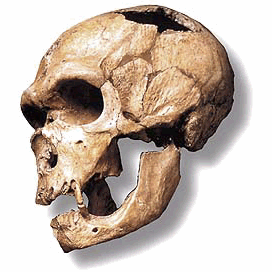You're a Mutant!
- Laurie L.

- Aug 12, 2019
- 3 min read
Updated: Jun 22, 2022
Humans experience about 10 new mutations every time a cell divides. What are mutations and are they dangerous? No need to panic because your body replicates constantly to repair and create new cells or even replace dead ones!
Mutations
Mutations can be positive (good), negative (bad), or neutral (has no effect). Most mutations are completely neutral, having no impact on your body or your children. Negative mutations can develop into genetic disorders or cancer while positive mutations give you a higher chance of survival and "reproductive success" meaning that you'll be more likely to have kids with the same positive mutation. To understand mutations further, we need to talk about DNA.
DNA

Your DNA has segments of nucleotides (the rungs on the ladder).
Nucleotides are made of nucleic acids which are also called bases: Guanine (G), Cytosine (C), Thymine (T), Adenine (A), and Uracil (U, for RNA only).
Bases matching together are called base pairs.
Your DNA is like a ladder that can unfold in half from top to bottom.
Once it unfolds in half, RNA comes in to make copies of the DNA with a minor change (instead of matching T with A, it will match a U with A)
Types of Mutations
Mutations happen in different ways. When your DNA ladder unfolds to make a copy, sometimes things get mixed up along the way. Going down the line, the question mark in infographic below could display any number of mutations.

A missense mutation is when there is a change between one 'base pair' nucleotide segment. Instead of G matching with a C like it's supposed to when it's copied, an A or a U might be placed there instead. After this happens, the 3 segmented strand creates the wrong protein.
A nonsense mutation is also a change in the 'base pair,' but instead of creating a new/different protein in the chain, it stops the copy process entirely.
An insertion mutation is when bases of DNA are added to the mix on accident.
A deletion mutation is when they get removed.
A duplication mutation is when extra bases are added.
Lastly, the frameshift mutation which is when the subtraction, addition, or duplication of base pairs affects how the whole sequence is read and copied because it throws off the reading process.

The segments are read in three's to make different proteins and depending on the differences, it can change the protein being made. Sometimes, segments with different letters can still code for the same protein which is why a frameshift mutation may not be happening every time a mutation occurs.
Mutations are the only piece of evolution that creates new genetic information and adaptation for every species on earth! Now you know what caused the differences leading up to reptiles and birds, primates and monkeys, and even humans!
Sources:
Lecture Notes: Dr. Kurtis Dean, Conservation Biology, Spring 2019
Lecture Notes: Dr. Kurtis Dean and Dr. James Loch, Evolution, Fall 2018
Lectures Notes: Dr. Hannah Marsh, Human Prehistory, Fall 2014; Human Variation, Spring 2016; Human Evolution, Fall 2016
Lecture Notes: Dr. Selene Nikaido, Genetics, Summer 2018
Lecture Notes: Dr. Stephen Wilson, Ecology, Spring 2015
Lecture Notes: Dr. Daryl Goad, Principles of Biology, Fall 2014
Lecture Notes: Mr. Michael Sholar, Life Science, Spring 2013
Bartee, Lisa, and Christine Anderson. General Biology II: Survey of Molecular Life and Genetics: Section 7 Mutations. Open Oregon Educational Resources, 2016, openoregon.pressbooks.pub/mhccbiology102/chapter/7-4-what-kinds-of-gene-mutations-are-possible/.
Sturm, Noel. "DNA Mutation and Repair." California State University Dominguez Hills Education, 2019, www2.csudh.edu/nsturm/CHEMXL153/DNAMutationRepair.htm.
Wilson, Douglas, and Jean Brainard. "Mutation Effects." CK-12 Foundation, 2019, www.ck12.org/biology/mutation-effects/lesson/Mutation-Effects-BIO/.









Comments